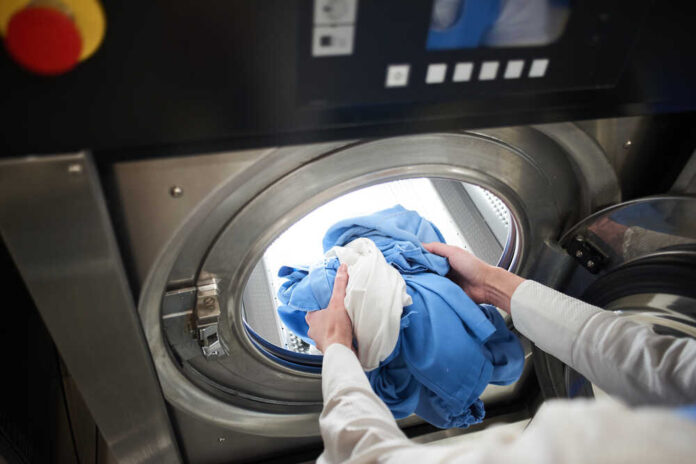
A startling discovery was made in a German hospital back in 2012.
The hospital had recently implemented a new standard screening procedure for incoming patients as a way to control the spread of multidrug resistant bacteria.
Thirteen newborns were found to be colonized with Klebsiella oxytoca bacteria. This bacterium can produce extended-spectrum beta-lactamase (ESBL), an enzyme that allows it to resist many antibiotics, making infections more difficult to treat.
Although the newborns did not develop an actual infection or show signs of illness associated with the bacteria, the presence of the bacteria was still a major concern.
The Role of Washing Machines in Spreading Bacteria
In response, researchers at the hospital conducted a thorough investigation to identify the source and transmission pathways of the bacteria.
The culprit was found to be a household-type washing machine located outside the main industrial laundry room that was only used for mothers’ clothes and baby knitwear.
Bacterial strains identical to those found in the newborns were detected in the detergent drawer and rubber door seal of the washing machine.
When the hospital removed the washing machine from use, no further colonizations were detected.
How to Clean and Maintain Your Washing Machine
The risk of encountering such an issue in your own home is minimal. But it is still worth taking some precautionary steps to reduce the risk of bacterial transmission through washing machines:
- Use a washing machine cleaner: Regularly using a dedicated washing machine cleaner can help to remove bacteria, mold, and mineral buildup. Follow the manufacturer’s instructions for how often to use the cleaner and the recommended amount.
- Remove and clean the detergent dispenser: Over time, the detergent dispenser can become clogged with residue. Remove the dispenser (if possible) and wash it in warm, soapy water.
- Wash clothing at higher temperatures: Higher temperatures can help kill bacteria. Follow the care instructions on clothing labels and use the appropriate temperature settings for different types of fabrics.
- Remove laundry promptly: Remove your laundry from the washing machine as soon as the cycle is complete to reduce the likelihood of mold growth on your clothes.
- Dry clothes thoroughly: Damp clothes can promote bacterial growth. Make sure to dry clothes completely before folding and storing them. If you’re using a dryer, clean the lint filter regularly to improve air circulation and efficiency.
- Clean the door seal: The rubber seal around the door is prone to collecting grime and residue. Use a cloth dampened with a mild cleaning solution to wipe down the seal, making sure to get into any crevices.
- Leave the door open after use: Allowing air circulation in the washer drum after each cycle helps prevent moisture buildup, which can lead to mold and bacterial growth.
- Avoid overloading the machine: Overloading the washing machine can prevent proper cleaning, leading to detergent buildup and a dirty washing environment. Stick to the manufacturer’s guidelines for load sizes.
By incorporating these cleaning and maintenance tips into your regular routine, you can significantly reduce the risks associated with a dirty washing machine and help to maintain a cleaner, healthier home.






















